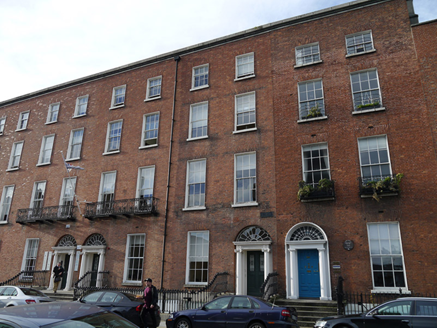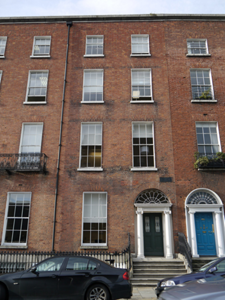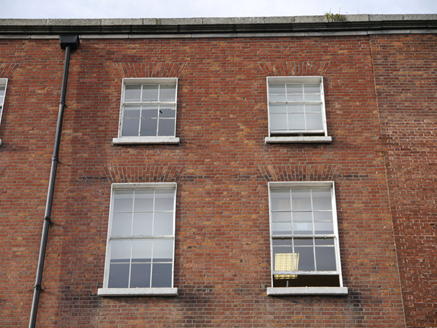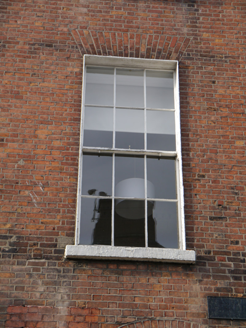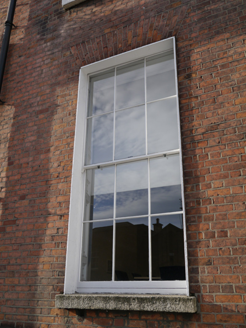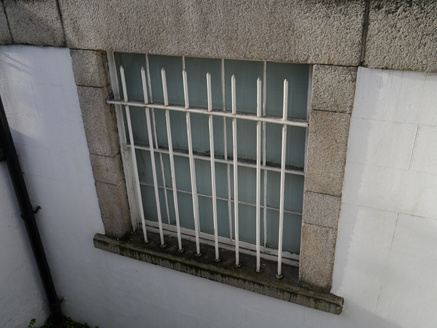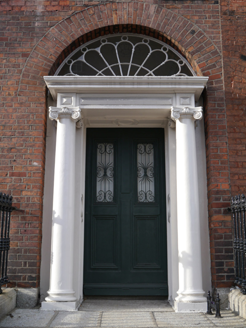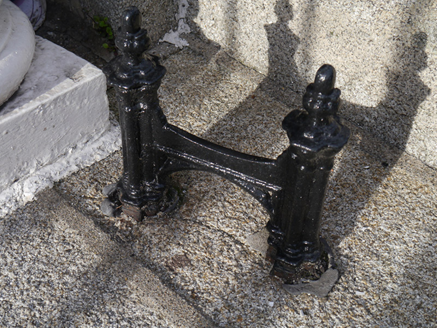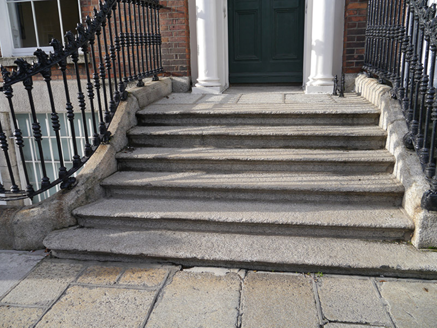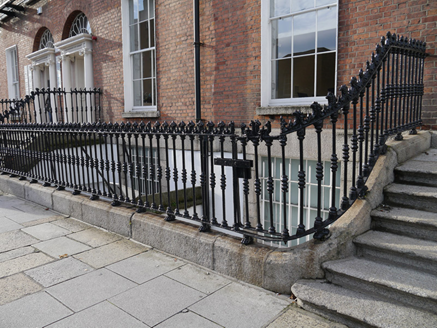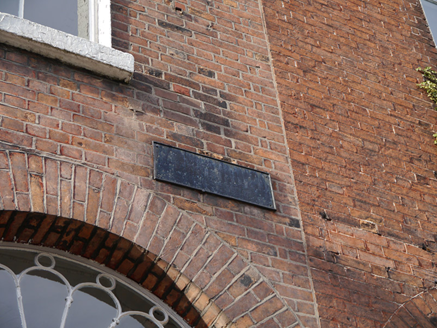Survey Data
Reg No
50930280
Rating
Regional
Categories of Special Interest
Architectural, Artistic
Original Use
House
In Use As
Office
Date
1820 - 1840
Coordinates
316373, 233067
Date Recorded
11/11/2015
Date Updated
--/--/--
Description
Terraced two-bay four-storey over basement former townhouse, built c. 1830, with bowed bay and two-stage return to rear (west). Now in use offices. Replacement mansard-style roof, concealed by parapet with moulded granite cornice and coping. Parapet gutters with uPVC downpipe to south side. Red brick walling laid in Flemish bond over ruled-and-lined rendered walling to basement beneath granite stringcourse. Square-headed window openings with brick voussoirs, patent reveals and granite sills; granite surrounds to basement opening with cast-iron grille affixed to reveals. Largely six-over-six sliding timber sash windows with cavetto or convex horns, three-over-six to third floor and ten-over-ten to basement. Round-headed door opening with brick voussoirs and recessed surround containing prostyle portico with nail-head panelled frieze and moulded cornice carried on Scamozzian-Ionic columns over plinth stops, with petal fanlight and replacement (possibly early-twentieth century) timber and glass panelled door with decorative iron work fronting upper glazed panels. Granite entrance platform with cast-iron boot scraper approached by six bull-nosed granite steps, flanked by curved iron railings with decorative cast-iron finials and collars on granite plinth, enclosing basement well to south. Coal-hole cover to pavement. Recent brick boundary wall to Laverty Close.
Appraisal
Laid out c. 1820, Pembroke Street Upper is characterised by well-proportioned late-Georgian style brick terraces which display restrained detailing and classically-styled doorcases. No. 32 forms part of a cohesive and well-retained terrace comprising Nos. 27-32 (50930280-5), which is distinguished by Scamozzian-Ionic doorcases, petal fanlights and decorative iron railings. The terrace makes a positive contribution to the streetscape and to the historic Georgian core of south Dublin.
